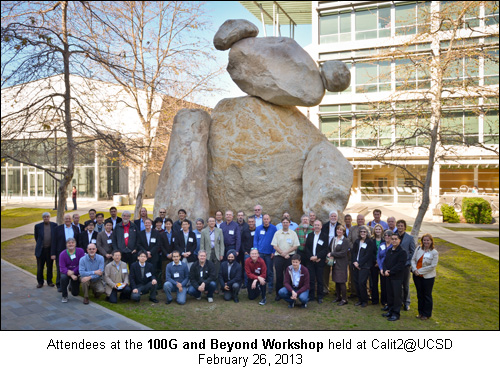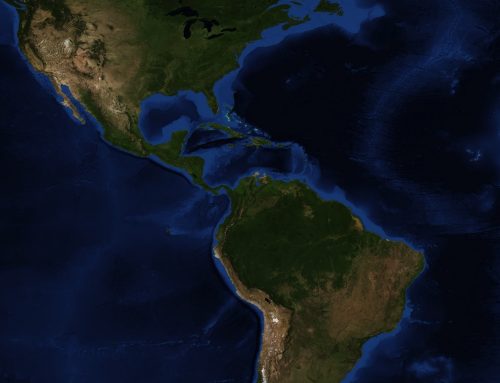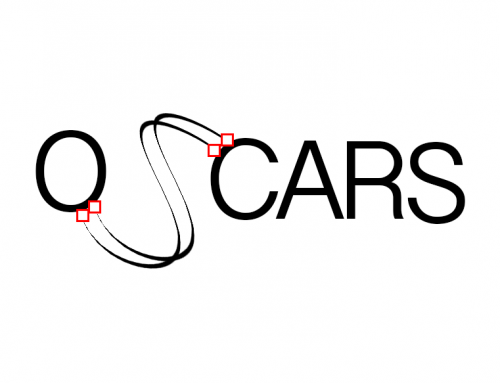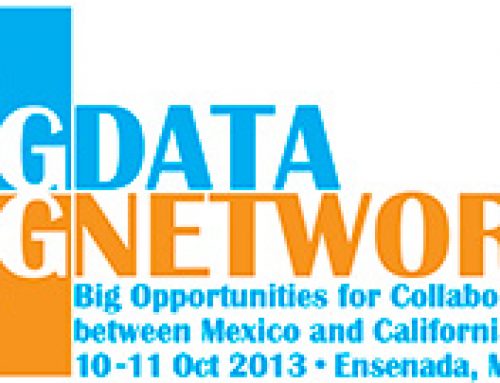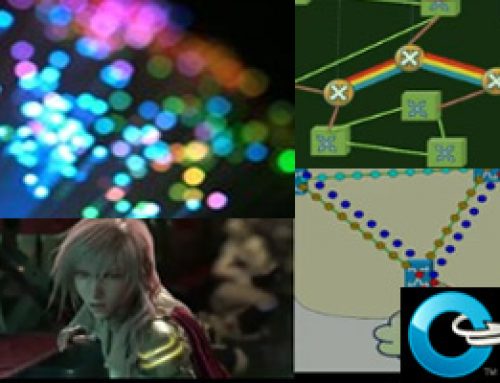Workshop panels and presentations focused on a myriad of ways in which 100-Gigabit networks promise great innovation in the decades to come. Also treated were the campus and lab strategies that could enable researchers and the facilities in which they operate to take full advantage of the next standard for research and education networking, innovation on the network itself, and regional, national, and international testbeds.“100-Gigabit networking is new standard for data-intensive research and education, and workshops like these are necessary to understand the way ahead, not only in terms of network design, but also to make sure that applications, facilities, and researchers themselves are prepared to take as much advantage of ultra-high-performance networks as possible,” said CENIC President and CEO Louis Fox.Calit2 Director Larry Smarr concurred, citing PRISM@UCSD, an innovative campus network project, enabled by a recent National Science Foundation grant to UCSD’s Phil Papadopoulos. PRISM will create optical “Big Data Freeways”, with speeds between 10 and 120 Gb/s, between data-intensive users, scientific instruments, clusters, and Calit2 and the San Diego Supercomputer Center, where it will interconnect to a CENIC 100G connection. PRISM creates an “easy-to-replicate” prototype of what can and must be done to ensure that the benefits of wide area 100G networking reach all the way into individual users and their labs. “We’ve brought together a wide range of data intensive application users with network specialists to create a unique user-driven high-bandwidth campus cyberinfrastructure,” Smarr stated. “This “last-mile” outreach to the application end-users must be done worldwide if the global research community is to see all the possible benefits of 100G networking.”ESnet Director Greg Bell also spoke of the necessity for community-building when observing the growth of traffic on the Energy Science Network, which provides the high-bandwidth connections that link scientists at national laboratories, universities, and other research institutions. “Traffic on our network has historically grown by ten times every four years, and doubles every 18 months, and 80% of the traffic on ESnet goes beyond it to other networks. There is an extremely tight coupling between ESnet and other national and regional networks, and the communities they serve.”After Bell, Fox, and Smarr welcomed attendees, the event began with a treatment of the scientific, medical, and media arts applications that will benefit from 100-Gigabit networking, chaired by Smarr. This session ran the gamut of applications, from ocean and climate research to high-resolution microscopy, protein structure databases, and digital cinema. During a spirited question and answer session, Smarr reminded the attendees that, “There are twice as many 100G applications, just at UCSD, as you’ve heard about today on the panel.” UCSD’s Dan Cayan addressed the complexity of climate research as a big-data science, and Vicky Rowley of the National Center for Microscopy and Imaging Research (NCMIR) similarly described high-resolution microscopy. The study of protein structure was the focus of the next two talks by UCSD’s Andreas Prlic of the Protein Data Bank and Ian Kaufman representing the Center for Computational Mass Spectrometry, while the Ocean Observing Initiative Cyberinfrastructure’s Matthew Arrott focused on ocean observing as a big-data science with strong dependency on high-bandwidth networking. Laurin Herr of CineGrid concluded the panel’s presentations by describing the unique and very pressing dependency of digital cinema on advanced networks, given that after one hundred years, analog film is widely recognized in the media industry as dead, and the transition to purely digital is here.The next session, chaired by Lawrence Berkeley Laboratories’ Brent Draney, examined campus and lab strategies for designing local network build-outs that can make best use of ultra-high-performance networking. SDSC/Calit2’s Phil Papadopoulos described the PRISM@UCSD technology in detail, while Pete Siegel spoke of UC Davis’s plans, taking special care to mention the necessity of involving the entire community from network specialists to faculty and staff to undergraduates. Christopher Paolini of San Diego State University described the design of that campus’s Science DMZ, and Brent Draney of NERSC addressed implementing security on tomorrow’s high-bandwidth networks, observing that, “security controls should enable scientific productivity, not impede it.”
The third area of focus was smart manufacturing, chaired by UCLA’s Jim Davis. Davis, together with Mark Goodstein of the Center for Smart Manufacturing Innovation (CSMI) and Caltech’s Si-ping Han, described the complex landscape of smart manufacturing to workshop attendees, from the community-building that must inform the design of any network that enables smart manufacturing, to making sure that manufacturers can take best advantage of nanoscale science during design, modeling, and assembly, and proposing potential business models for organizations that seek to promote and advocate for smart manufacturing.
Software-Defined Networking (SDN) emerged as a major topic of subsequent panels on network innovation and testbeds. ESnet’s Inder Monga chaired a panel on 100-Gigabit network innovations including software-defined networking enabling the network to become a programmable instrument. The San Diego Supercomputer Center’s Mike Norman, Lawrence Berkeley National Laboratories’ Zarija Lukic, Caltech’s Harvey Newman, Stanford’s Johan van Reijendam, and Clemson University’s KC Wang all spoke of the importance of dynamic circuits enabled by SDN to take full advantage of what 100G networking can provide, especially for the data-intensive sciences.
USC’s John Silvester chaired the day’s final panel on scientific workflows and testbeds. Ewa Deelman, also of USC, discussed how scientific workflow and network design can be used to inform one another to optimize both science and network. CENIC’s Brian Court described the California OpenFlow Testbed Network (COTN), created by CENIC to enable network researchers in California to carry out OpenFlow and SDN-related research. Brian Tierney of ESnet described that network’s own tiered testbed, with one tier for 100G research, one OpenFlow-enabled tier, and another dark-fiber tier. UCSD’s Dallas Thornton and the UC Office of the President’s Paul Weiss concluded the panel programming with discussions of cloud services implementations at SDSC and the importance of efficiency in network engineering.
Bridging the gap between campus innovations to California and national testbeds was the topic for the concluding discussion, led by Bell, Fox, and Smarr. Once again, the panelists and attendees quickly focused on the vital importance of reaching out to a wide a range of application users to ensure that any ultra-high-performance network is the end-product of collaboration between network specialists and the widest possible breadth of app users starting from the earliest design stages. “Without the application drivers,” Smarr observed, “you end up with empty networks.” However, the day demonstrated that many data-intensive applications are ready and able to make the jump to 100G optical flows, opening entirely new vistas for scientific discovery.
* * * * * * * * * *
About CENIC • www.cenic.org
California’s education and research communities leverage their networking resources under CENIC, the Corporation for Education Network Initiatives in California, in order to obtain cost-effective, high-bandwidth networking to support their missions and answer the needs of their faculty, staff, and students. CENIC designs, implements, and operates CalREN, the California Research and Education Network, a high-bandwidth, high-capacity Internet network specially designed to meet the unique requirements of these communities, and to which the vast majority of the state’s K-20 educational institutions are connected. In order to facilitate collaboration in education and research, CENIC also provides connectivity to non-California institutions and industry research organizations with which CENIC’s Associate researchers and educators are engaged.
About Calit2 • www.calit2.net
The California Institute for Telecommunications and Information Technology (Calit2) is $400 million academic research institution jointly run by the University of California, San Diego and the University of California, Irvine. Calit2 was established in 2000 as one of the four UC Gray Davis Institutes for Science and Innovation. As a multidisciplinary research institution, it is devoted to conducting cutting-edge research discovering new ways in which emerging technologies can improve the state’s economy and citizens’ quality of life. Keeping in mind its goal of addressing large-scale societal issues, Calit2 extends beyond education and research by also focusing on the development and deployment of prototype infrastructure for testing new solutions in real world environments. Calit2 also provides an academic research environment in which students can work alongside industry professionals to take part in conducting research and prototyping and testing new technologies.
About ESnet • www.es.net
The Energy Sciences Network (ESnet) is DOE’s high-performance networking facility, engineered and optimized for large-scale science. Funded by the Office of Science (SC) and managed by Berkeley Lab, ESnet interconnects the entire national laboratory system, including its supercomputer centers and user facilities –enabling tens of thousands of scientists to transfer data, access remote resources, and collaborate productivel

